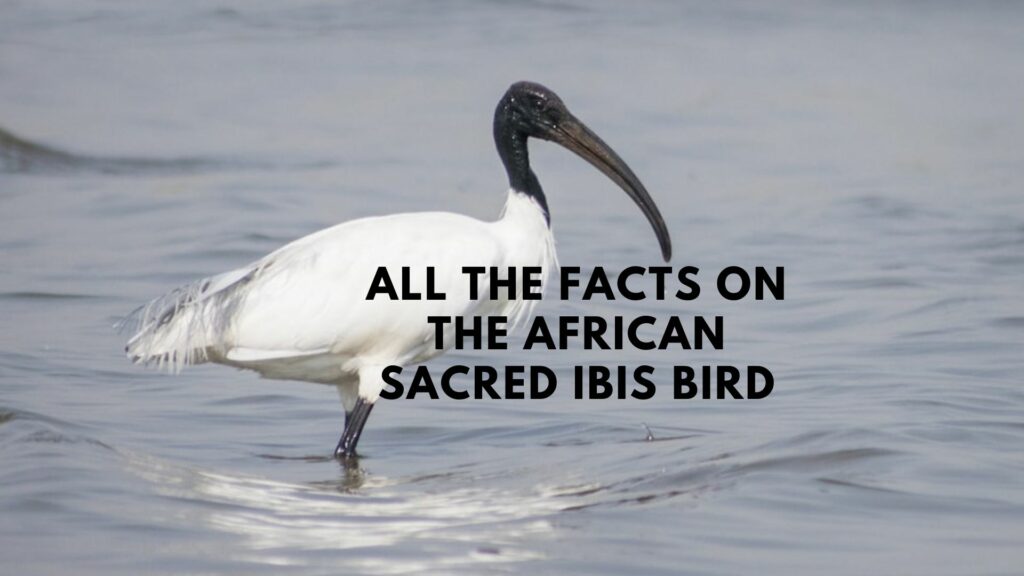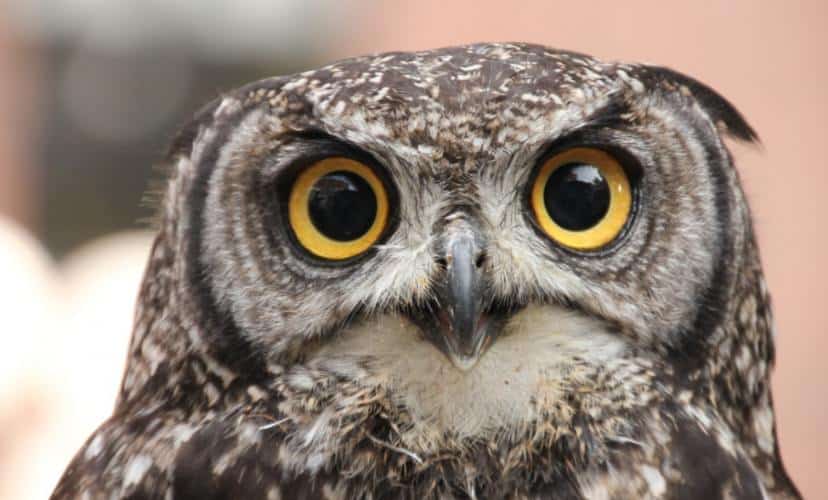Imagine a shoreline where waves rhythmically kiss the rocks, and a distinct bird, with its jet-black feathers and bright red beak, forages intently. This is the African Black Oystercatcher, a striking bird that graces the southern coasts of Africa with its presence.
As an intriguing species, the African oystercatcher captures the attention of birdwatchers and conservationists alike. In a world rich with bird diversity, understanding this particular oystercatcher is vital, especially when considering its similar yet distinctive counterparts in other parts of the world, such as the American and Canary Island oystercatchers.
In this article, we will unfold the layers of the African oystercatcher’s life, beginning with its striking visual identity.

Exquisite Plumes: Appearance and Identity of the African Black Oystercatcher
The African Black Oystercatcher, known scientifically as ‘Haematopus Moquini’, is easily recognizable by its striking appearance. With predominantly glossy black or dark brown plumage, these birds stand out against the sandy and rocky coastal backdrops they frequent.
Adult birds exhibit bright red-orange bills and eye rings, which starkly contrast with their dark feathers. Their legs and feet, also a vibrant red, add to the charismatic visual appeal.
Upon closer examination, one may notice subtle differences between the sexes. Males typically display slightly longer bills, which they use adeptly to pry open their shellfish prey. Females, while matching the males in their black attire, may have a rounder body shape.
The size of the African Black Oystercatcher can vary slightly between individuals, with males generally being larger than females, and is a medium-sized shorebird. Adults typically measure around 40 to 45 centimeters (16 to 18 inches) in length.

The vibrancy of these colors serves as more than just ornamentation; it is also indicative of the bird’s age and vitality, thus influencing their success in both survival and reproduction. This is crucial as identifying healthy mates strongly impacts the overall reproductive success of the population, which is vital for a species with conservation concerns.
The Differences between the African Black Oystercatchers and The American and European Oystercatchers.
When compared with their American and European counterparts, African black oystercatchers are unique in their darker feathering and the starkness of their bill and eye rings.
Here’s a table outlining some key differences between the African Black Oystercatcher (Haematopus moquini), the American Oystercatcher (Haematopus palliatus), and the Eurasian Oystercatcher (Haematopus ostralegus):
| Characteristic | African Black Oystercatcher | American Oystercatcher | Eurasian Oystercatcher |
|---|---|---|---|
| Distribution | Southern Africa | North and South America | Europe and Asia |
| Plumage Color | Black | Black and White | Black and White |
| Bill Color | Red | Orange or Red | Orange or Red |
| Eye Ring Color | Red | Yellow or Orange | Orange or Red |
| Leg Color | Pink to Reddish | Pink | Pink to Reddish |
| Size | 40-45 cm (16-18 inches) | 42-52 cm (17-20 inches) | 40-45 cm (16-18 inches) |
| Habitat | Rocky shores, sandy beaches | Coastal habitats | Coastal habitats |
| Distinctive Features | Red bill and eye ring | Long, thick bill | Long, slender bill |
| Vocalizations | High-pitched whistles | Sharp, loud calls | Loud, melodious calls |
Keep in mind that these are general characteristics, and there may be variations among individuals and populations within each species.
Coastal Inhabitants: Habitats and Distribution of the African Oystercatcher
The African Black Oystercatcher, a striking figure along the coastal stretches, favors environments where the sound of waves meeting the shore is ever-present. This species predominantly resides along the southern coast of Africa, from the rocky outcrops of Namibia to the eastern shores of South Africa.
Calling beaches and rocky coastlines home, these birds select habitats providing ample food sources and suitable nesting sites. It’s common to spot them striding on sandy or pebbled beaches or foraging on mussel-clad rocks, where seaweed and marine invertebrates are in abundance.
Less known is their adaptive use of estuaries, coastal wetlands, and lagoons, environments that offer safety and diversity for their feeding routines. These alternate habitats are crucial during breeding seasons when safe nesting sites become a priority.
While African Oystercatchers chiefly remain residential, some populations exhibit partial migratory behavior, making seasonal forays for better foraging grounds.
The habitat preferences of these birds underlie their importance in local biodiversity. Their presence signifies a robust coastal ecosystem, making them essential for regional conservation efforts.

Manifesting Manners: Behavior and Social Dynamics
The African oystercatcher’s behavior reflects well on its survival skills, honed to perfection along the coasts of the African continent.
Foraging takes center stage in the daily life of an oystercatcher. Their diet mainly consists of mollusks, crustaceans, and other small marine animals they skillfully pluck from the sands and rocks. Quick and precise, their bright red bills are not only a striking feature but an essential tool for prying open tough shells.
When it comes to their social world, African oystercatchers are known for being territorial, especially during the breeding season. They often engage in loud calls and displays to assert their presence and defend their patches of shoreline from both intruders and competitors.
Interestingly, these birds aren’t shy about crossing paths with humans, either. As coastal areas witness increased human activity, oystercatchers have had to adapt.
Now, nesting and raising the next generation is a striking element of their behavior. African oystercatchers tend to form close bonds with mates, often pairing for life.
A Bond for Life: Breeding Habits and Parenting Styles
African black oystercatchers are known not just for their striking looks, but also for their fascinating breeding habits. These birds form MONOGAMOUS PAIR BONDS that often last for life, a rare trait in the avian world that resonates with those who value deep long-term connections.
During the breeding season, which typically occurs between November and April, each pair zealously guards their territory against intruders to provide a safe environment for raising their young.
Nesting sites are chosen with great care. African black oystercatchers prefer locations on the ground that offer a vantage point, such as raised sand dunes or rocky outcrops. These sites are closer to food sources and away from the high tide’s reach. A simple depression in the sand suffices for a nest, where females typically lay two or three speckled eggs.
Both parents show a commendable dedication to their offspring. They take turns incubating the eggs for a period of about a month until the chicks hatch.
Once the young ones emerge, the parental duties extend to teaching the chicks to forage for themselves and vigilantly shielding them from predators. The fledglings remain dependent on their parents for several months before fully stretching their wings into independence.
The attentive parenting style not only enhances the survival of their chicks but also fosters a strong familial bond, mirroring the close-knit family units humans often cherish.
Between the Tides: The African Oystercatcher’s Role in Ecosystems
The African black oystercatcher, known scientifically as Haematopus moquini, holds a critical role along the coasts it frequents. These birds are part of an intricate web where every organism relies on the delicate balance of the marine ecosystem. African oystercatchers are particularly influential in controlling some shellfish populations, which could otherwise overpopulate and affect the intertidal zone’s biodiversity.
In their pursuit of mollusks, which make up a significant portion of their diet, these birds assist in regulating the density of these shellfish. This natural population control is essential for maintaining diversity on the rocky shorelines.
By managing the numbers of mussels and limpets, African oystercatchers indirectly support a variety of other species, which in turn fosters a robust and dynamic coastal environment.
Furthermore, the presence of African black oystercatchers can be a significant indicator of the health of coastal areas. A stable or increasing population often reflects a healthy, pollution-free environment, whereas their absence or decline could signify underlying ecological issues.

Flight for Survival: Conservation Status and Efforts
The African Black Oystercatcher species is listed as ‘Near Threatened’ on the International Union for Conservation of Nature (IUCN) Red List of Threatened Species. This status, while not critical, serves as a clarion call to environmentalists and governments alike, indicating the need for ongoing, vigilant conservation efforts.
The challenges that these birds face are multi-faceted. Habitat destruction stands as a primary threat, with human activity encroaching upon and degrading their coastal environments.
Pollution, specifically plastic and oil spills, directly affects their food sources and nesting grounds. Furthermore, increased recreational use of beaches can disturb breeding sites and reduce the birds’ ability to successfully raise their young.
To fortify the future of the African oystercatcher, a variety of conservation programs have been put into action. Protected areas and nature reserves along coastlines have become sanctuaries for these birds.
Some regions implement seasonal restrictions on beach access during critical breeding periods. Research and monitoring efforts are pivotal, providing data that inform decisions and facilitate adaptive management strategies.

Engaging fishermen, tour operators, and coastal developers fosters a collaborative approach to sustainable practices that can benefit both human interests and the preservation of oystercatcher populations.
These conservation measures, while promising, require consistent support and reinforcement to ensure the African Black Oystercatcher soars safely into the future.
Some FAQs on the Oystercatcher.
In this section, we always go over a few FAQs that people might still have on the specific topic, so let’s go!
Do Oystercatchers get aggressive?
Yes, Oystercatchers, including the African Black Oystercatcher, can exhibit aggressive behavior, especially during the breeding season or when defending their nesting territories. These birds are known for being territorial, and they may fiercely defend their nests and chicks from potential threats, including other birds or animals that come too close.
It’s important to note that aggression in Oystercatchers is typically directed towards perceived threats rather than humans. However, it’s advisable to maintain a respectful distance and observe these birds from afar to avoid disturbing their natural behavior.
How long do Black Oystercatchers live?
The lifespan of Black Oystercatchers, like the African Black Oystercatcher, can vary, and it is influenced by factors such as predation, environmental conditions, and human disturbances. In general, the lifespan of these birds ranges from 10 to 15 years in the wild.
How is the African Black Oystercatcher called in Afrikaans?
In Afrikaans, the African Black Oystercatcher is called “Swarttobie.” “Swart” translates to “black,” and “tobie” is a colloquial term for an oystercatcher. Therefore, the name “Swarttobie” directly refers to the black oystercatcher, describing its distinctive black plumage.
Why did the Canary Islands Oystercatcher become extinct?
There is no straight answer to this yet, but..
The Canary Islands Oystercatcher, despite its distinct appearance, is genetically very similar to the Eurasian Oystercatcher. It is likely a subspecies of the Eurasian Oystercatcher rather than a separate species.
The extinction of the Canary Islands Oystercatcher has not resulted in significant genetic diversity loss. The reasons for its extinction, possibly due to the introduction of cats and rats, human hunting, and competition for shellfish, remain not fully understood. Scientific committees will now need to determine whether to reclassify the species.
Want to find the best binoculars for a safari? Check out my blog post here!
My Final Conclusion.
I hope that you found this article on the African Black Oystercatcher informative enough and if you have any more questions about this bird, please feel free to ask them down below in the comment section or join me on my social media channels below for more pictures, videos and stories about my travels to Africa!
I wish you happy travels!
Kind regards,
Lizzy
I now have a YouTube channel as well!
YouTube
Hello Africa travellers!
Who am I? Well, the least you can say is that I am quite crazy about Africa, its nature, its climate, its culture, and more.
As a young woman in my twenties, I had already traveled to several African countries by traveling along in an overlander on my own and mostly camping ( or glamping ) and just fell in love with the diversity of it all.
So much, so that at the age of 26, I went back to university to study biology, which, unfortunately, I couldn’t finish because of health reasons (yes, I got sick from a tropical disease, oh cynicism). But this did not stop my dream of traveling back to Africa several times, and I still do.
My dream was back then to leave Europe and go study animal behavior, especially the elephants (sure, that’s every girl’s dream haha), but I am also very much intrigued by hyenas and other “ugly African animals“.
So, I “kind of” have a little bit of a scientific approach to my articles, when I write about African birds, for example. And most of all: the passion.
But life goes on, you move from one side of the country to the other, you get sick again and top it off with lower back problems, and before you know it, you are over 50 hahaha!
Now, I still travel to Africa, but take it a bit “easier” than the good old camping days, and stay in comfortable, yet affordable accommodations, together with my husband Wouter.
These are some of the countries I have traveled to: Kenya, Tanzania, Zanzibar, Malawi, Zambia, Zimbabwe, South Africa, Namibia, Botswana, Tunisia, and a little bit of Lesotho LOL .
While clearly not being African territory, but Spanish, I also visited Gran Canaria and Tenerife, and location-wise, I consider them “African”, because of their climate and nature, sue me :-p
The last trip I took was to South Africa in the year 2023, and it sure got the fevers for Africa back! From the Barberton mountains to the Drakensberg and the Southcoast, one month wasn’t enough at all to see the whole country, so we’ll be back! At ease and with a little bit more luxury than in my younger days haha!
I wish you happy travels!
Kind regards
Lizzy











I love reading these posts!! The African Oystercatcher is such a unique looking bird. I love how you have detailed the differences between the African against the European and American Oystercatchers. For someone with very little knowledge on the subject, this is a nice touch. I had no idea any birds mated for life, so that is something I’ve learned for this. Keep up the great work, these are always enjoyable posts to read!!
Hello again Ryan!
Thank you for your continuous support and I will go on for sure! 😉
Lizzy
I have some plans with my family to pay a visit to Africa this summer.
So this Oystercatcher might be a bird that I might get to meet. This article was really helpful for me because I wanted to know if it was aggressive, and has I can see they are, specially during breeding season.
So I will watch out for that! Great article! It was enjoyable to read!
– Jonathan